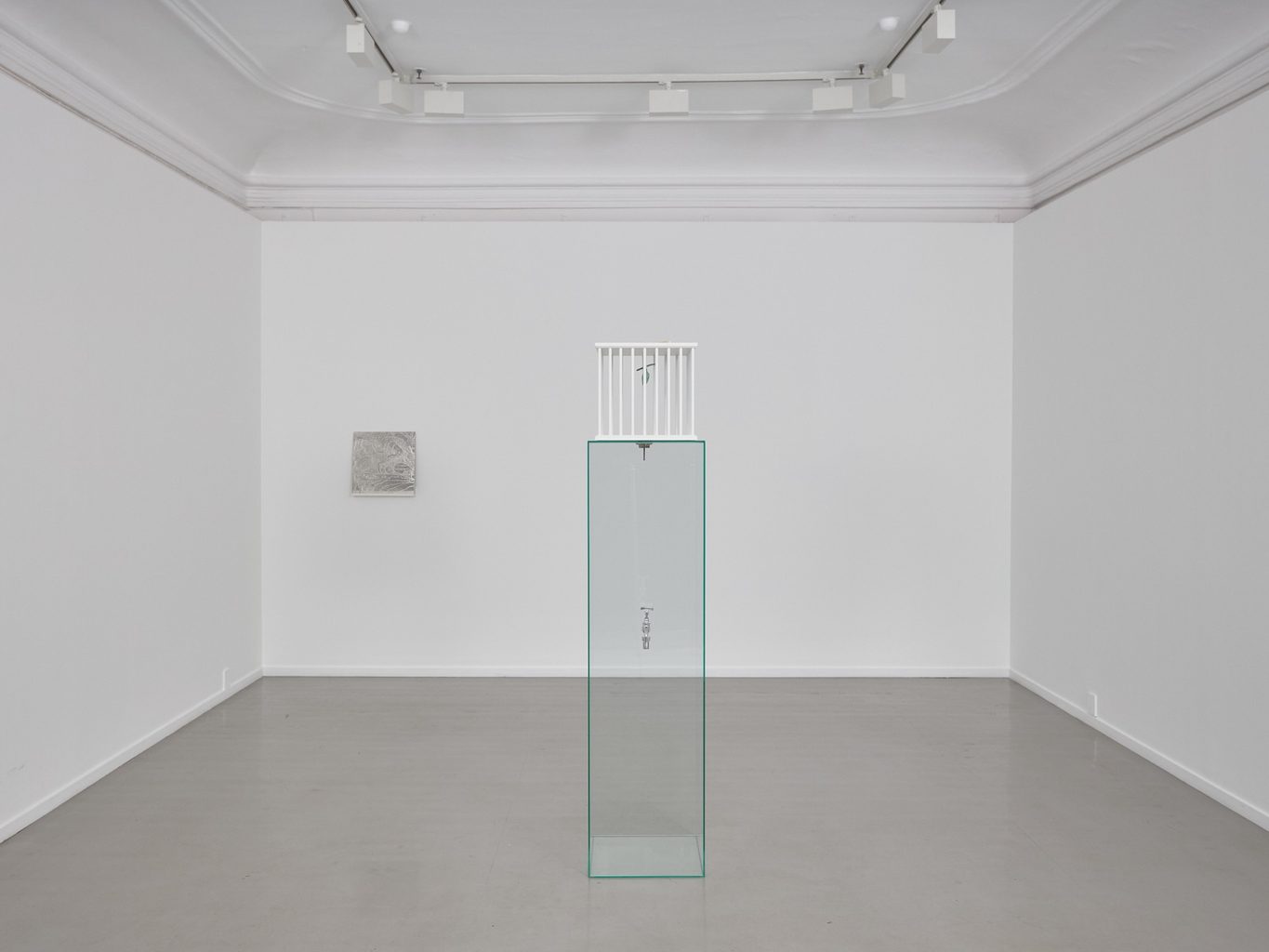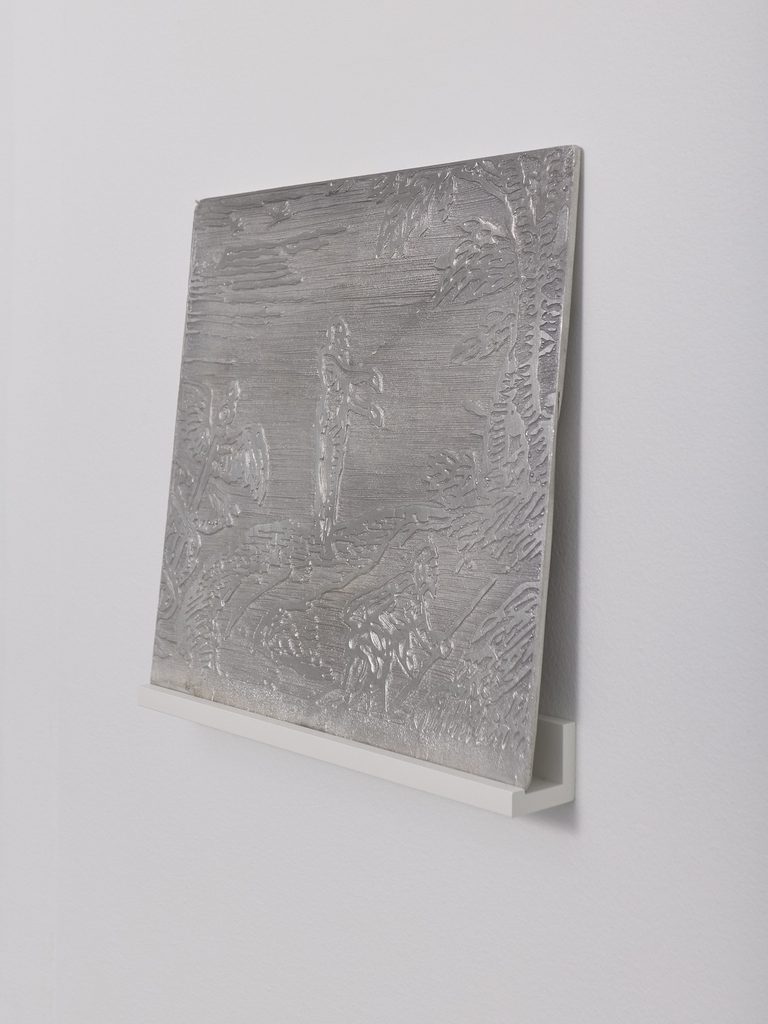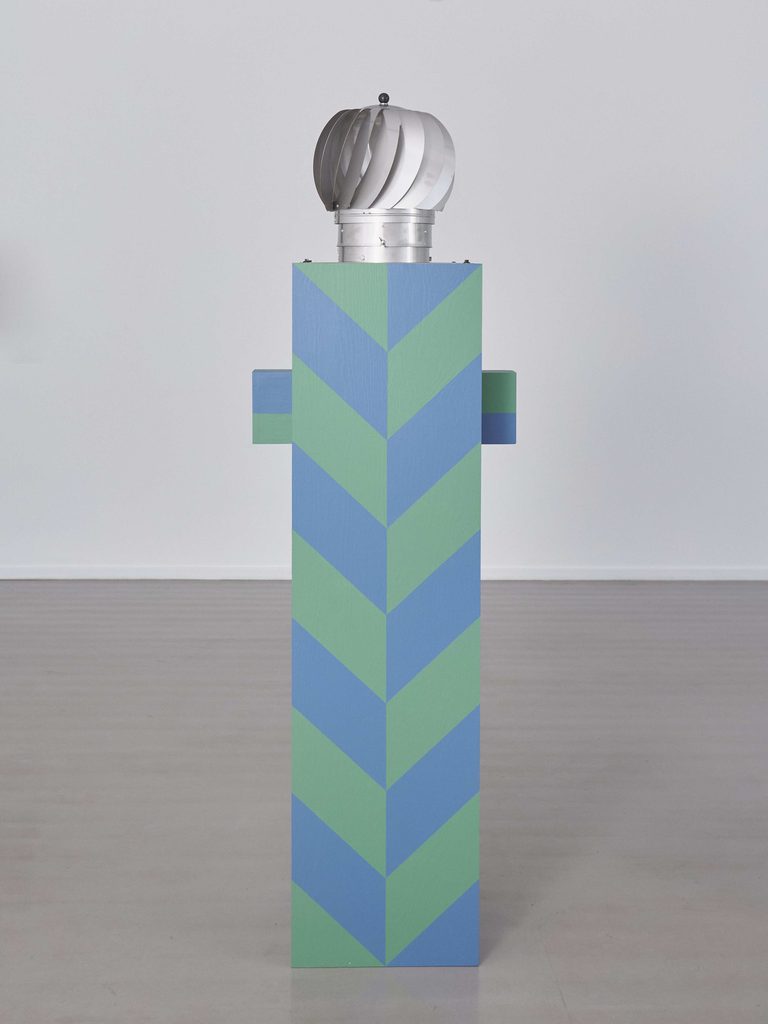Marius Engh
The Sign of Four

The autumn season opens with The Sign of Four, a solo exhibition by Marius Engh. Marius Engh (b. 1974) is considered one of Norway’s leading contemporary artists. With a practice spanning over two decades, he has distinguished himself with works that investigate connections between history, archaeology, philosophy, and the cultural landscape of our time.
Engh works across a wide range of media – from sculpture and installation to photography, text, printmaking, and publications. Through a conceptually and visually precise formal language, he holds up a mirror to the present in which the past is reflected, casting shadows and inviting a curious engagement from the viewer. Drawing on thorough research and fieldwork, he activates historical materials and symbols, allowing them to emerge in new contexts.
The exhibition The Sign of Four was developed following a research residency in Athens, where Marius Engh examined the relationship between sculpture and landscape, with particular focus on the origins of the pedestal and the portrait bust in the so-called herm sculpture. A herm is an abstract sculptural form rooted in ancient Greece, originally associated with the god Hermes – protector of travelers and commerce. The form evolved from a simple stone marker into a rectangular pillar topped with a portrait bust. In antiquity, herms served both as altars and as markers in the landscape, placed at borders, crossroads, marketplaces, and sacred sites. Over time, not only Hermes himself but also people associated with his attributes were honored through portraiture – a tradition that can be seen as an extension of the herm sculpture.
Marius Engh explores the visual arts’ relationship to the pedestal and draws parallels to the human body. His sculptures carry traces of something animated and spiritual, with attributes that suggest various qualities – an old set of scales, a glowing lantern with two lamps, a pair of winged shoes. They are dressed in painted patterns and contrasting colors, appearing at once familiar and strange, with visual references to heraldry, signal flags, and border markers. With titles such as Oracle of the Agora (Oracle of the Marketplace) and Hermaion (Lucky Find), the works point to the herm’s original role as a guidepost in human existence.
In the exhibition, the pedestal functions as the body of the sculpture, while the object crowns it like a head – a unit that in antiquity was inseparable, but later came to be split, with the pedestal serving merely to elevate the bust. In contemporary art, this combination may be perceived as a kind of furniture: seemingly neutral, yet carrying an underlying idea of value and display.


The title The Sign of Four refers both to the herm’s square form and its role as a guide pointing in four directions. It also alludes to Hermes’ connection to the number four – he was born in the fourth month of the year, celebrated on the fourth day of each month, and the number appears frequently in medieval and Renaissance merchant and maker’s marks as a symbol of good fortune.
The sculptures are surrounded by tin reliefs based on linocuts, depicting outlines of figures and nature. The imagery is drawn from the book Emblemata, first published in 1531. Emblem literature was popular in 16th- and 17th-century Europe, combining hundreds of woodcuts or engravings with short verses in which the interplay between image and text conveyed life wisdom through moral, philosophical, or political ideas. The aim was to prompt the viewer to reflect on their own life.
Here, two illustrations portraying Hermes as guide and companion have been used as templates. Each image is divided into a cross creating four fields, forming eight square reliefs in total. The reflections in the tin flatten the distinction between positive and negative space, softening contrasts so that paths and roads take on the character of water and rivers. Hermes’ mobility is captured in the weight of the material, creating the fragmented, underlying landscape of the exhibition.
In The Sign of Four, Engh draws lines between ancient ideas of borders and movement, symbolic language and systems of value, examining how these – from oracular prophecy to the notion of universal balance – continue to echo in, and challenge, our present day.

Bio
Marius Engh (b. 1974, Oslo) lives and works in Oslo. He was educated at the Oslo National Academy of the Arts and the Royal Danish Academy of Fine Arts in Copenhagen. Engh has presented his work extensively in Norway and abroad, with recent solo exhibitions at, among others, Centralbanken, Oslo (2024), Borgenheim Rosenhof, Oslo (2023), VEDA, Florence (2022), VanEtten, Oslo (2022), Hulias, Oslo (2021), and Kunstnerforbundet, Oslo (2020). His work is included in numerous public collections, such as the National Museum of Art, Architecture and Design; Oslo Municipality’s Art Collection; Kode; Stavanger Art Museum; and KORO (Public Art Norway). He has also completed several major public art commissions, including Hermopolis at the Norwegian Directorate of Customs in Oslo (KORO, 2019). Engh is represented by STANDARD (OSLO), Layr (Vienna), VEDA (Florence), and Luis Adelantado (Valencia). He runs the independent publishing house and exhibition space Hermetiske Skygger, and in September he will take part in the group exhibition War is Peace? at the Nobel Peace Center in Oslo and Curated by at Layr in Vienna.
The exhibition is supported by Kulturrådet, Billedkunstnernes Vederlagsfond and Ingrid Lindbäck Langaard stiftelse.